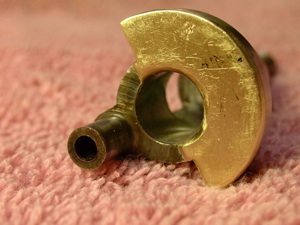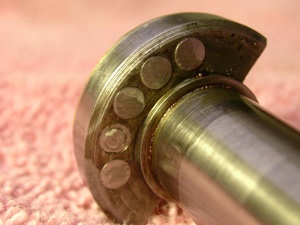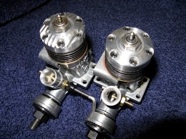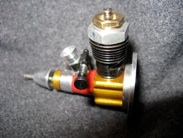Balancing
Improved Balance has the potential to reduce internal forces in the engine and resulting vibrational loads which are transmitted to the airframe. The reduced internal loads on the main and rod bearings has the benefit of improving the life of these elements and improving engine performance. Reduction of the loads transmitted to the airframe has similar life benefits for structure and other components such as timers.
On a single cylinder complete balance can never be obtained without the addition of some sort of secondary balance shaft or other clap-trap. What can be done on our engines is to match the crankshaft counter weight to a percentage of the reciprocation weight which is comprised of the piston/wrist pin and a fraction of the rod weight. As one approaches the best balance point the major vertical forces/vibration are reduced at the expense of increasing the horizontal forces and resulting vibration. Balance improvements can also achieved by reducing the reciprocating weight. Reduction in the reciprocating weight is one of the benefits of the modern aluminum pistons used in ABC/AAC engines in place of cast iron pistons used in most NOS engines.

When developing a design for a particular engine weights of the components are determined to the 0.1 gram; stock balance torque is measured using known weights on the crank pin; and the balance modifications established using CAD methods coupled with balance calculations on an Excel spreadsheet. Acceleration loads transmitted to the test stand before and after balancing in the vertical axis are measured at near constant rpm to verify new designs.
Reciprocating Weight Reduction will lower internal loads as well as reduce the need for added crankshaft counterweight. Piston weight can be reduced by removing excess material in the piston’s interior and removal of of a considerable portion of the piston on the transfer port side. Both of these have the risk of causing the piston to go out-of-round and are not generally recommended. Due to the risks involved, piston modifications are only performed at the request of the owner. Removing a large portion of transfer port side of the piston has been performed on a few engines which have had the piston damaged by failed rods.
A few engines have solid wrist pins which can be drilled out to lighten weight. Although the gain is small the risk is nil. The pin is then fitted with teflon pads to protect the cylinder wall.
One final weight reduction is to modify the rod weight through removal of structurally unnecessary material and some streamlining the cross section. Although the weight benefits are small streamlining has the added benefit of slightly reducing the internal flow restrictions.


Counter Weight Modifications are performed by drilling holes in the stock counter weight and filling the holes with a heavier material - in this case a machinable tungsten carbide material specifically made for balancing. Weight size and location are established to optimize the balance within the constraints of the counterweight. Additionally for shaft induction engines the weights are rotated towards the inlet window to compensate for the imbalance caused by the window. On some engines the size of the stock counter weight is not large enough to allow sufficient addition of tungsten plugs. If there is adequate clearance between the rod and counterweight a brass plate can be soldered to achieve better balance.

